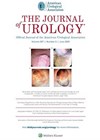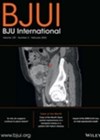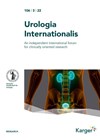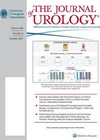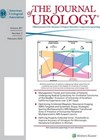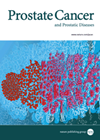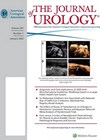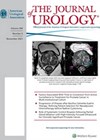
Journal Reviews
Preoperative testosterone for hypospadias
Hypospadias affects around 1 in 400 boys. Glans width (GW) of <14mm has been shown to be an independent risk factor for urethroplasty complications following hypospadias repair. Testosterone (T) administration in prepubertal males increases both penile length and circumference. Its...
Biopsy should be considered for older boys (>10 years) undergoing orchidopexy for intra-abdominal testes
Cryptorchidism is associated with a 3 to 10-fold increase in malignancy and the age at which it is undertaken matters; the risk of testicular cancer is doubled in patients undergoing orchidopexy at 13 years of age compared to that treated...
To clamp or not to clamp – outcomes of the CLOCK trial for robotic partial nephrectomy
The benefits of partial over radical nephrectomy are well established. The CLOCK trial (CLamp vs. Off Clamp the Kidney during robotic partial nephrectomy) was designed as a multicentre, randomised controlled trial to generate evidence on the role of the off-clamp...
BUS for urethral stricture
The earliest description of urethral stricture and its treatment occurred in the sixth century BC in India. A wide variety of factors can lead to stricture disease e.g. iatrogenic, urinary tract infection (UTI), sexually transmitted infections, catheters, trauma to the...
Effects of orchidopexy upon testicular temperature
The undescended testis (cryptorchidism) is the most common correctable disorder in paediatric urology (1-4.6% of newborns). An important role of the scrotum is to keep the temperature of the testes 2-40C below core body temperature. Here, Shiraishi et al. from...
Upper tract urothelial carcinoma following cystectomy
Metachronous upper tract urothelial cancer (UTUC) is encountered in about 5% of patients after radical cystectomy (RC) with a median time to diagnosis of 24-36 months after RC, and most are asymptomatic and detected by surveillance protocols. In this multivariate...
Is Retzius-sparing prostatectomy the way forward?
Urinary incontinence is a common complication of conventional robot-assisted radical prostatectomy (RARP). Retzius-sparing RARP is performed through the pouch of Douglas to avoid destroying the pelvic fascia and the prostate’s anatomical structures. It has shown early favourable results in terms...
Is robotic pyeloplasty in the under-ones as good as open repair?
Pelviureteric junction obstruction (PUJO) is a common cause of paediatric hydronephrosis. Indications for intervention include reduced renal function (<40%), symptoms (urinary tract infection or pain) and increasing dilatation. Although the Anderson-Hynes open pyeloplasty (OP) has long been the gold standard...
BCG after TURBT – does timing matter?
Intravesical bacille Calmette–Guerin (BCG) therapy continues to be widely used for patients with intermediate / high-risk non-muscle invasive bladder cancer (NMIBC). In this article, the researchers identified the lack of sufficient evidence with regards to timing of BCG after transurethral...
Loop-tail stents in reducing stent related symptoms – the search continues
Insertion of double J (DJ) stents is one of the most commonly performed procedures in urology. One of its major drawbacks is stent related symptoms (SRS) which has generated a lot of research in drugs, stent design and materials. One...
Refining management of non-visible haematuria
The optimal evaluation of non-visible haematuria (NVH) continues to be debated, with competing interests of avoidance underdiagnosis and the harms of over-testing. Current National Institute for Health & Care Excellent (NICE) guidance recommends referral for patients ≥60 years with NVH....
The urinary microbiome in IC/BPS: more complicated than we imagined
The concluding statement of this short review states, “the study of the urinary microbiome and its impact on urological disease, including IC/BPS, is in its infancy.” A lot has been said on this subject in recent years, but this, in...

